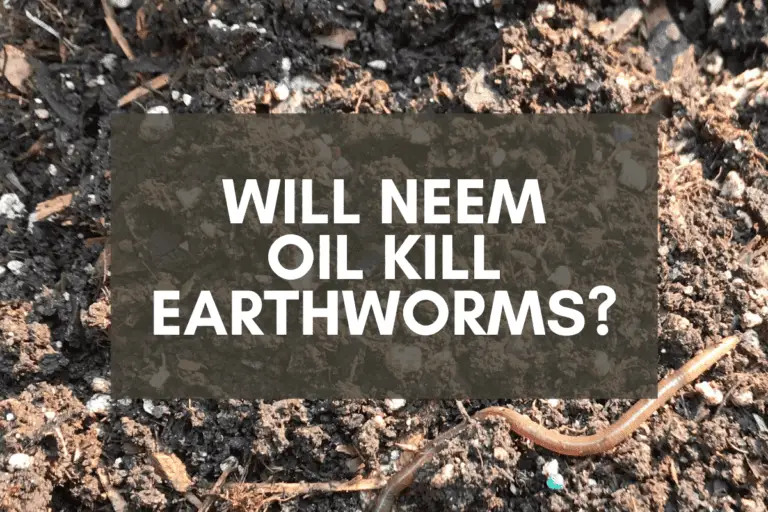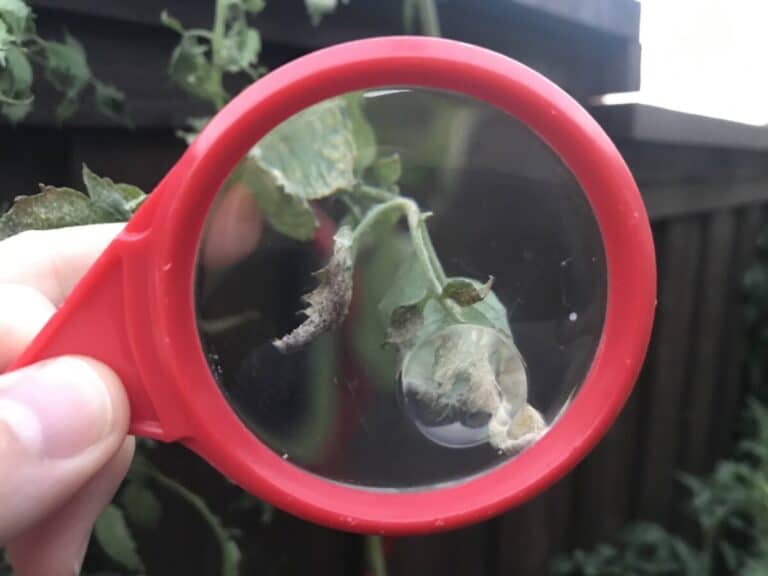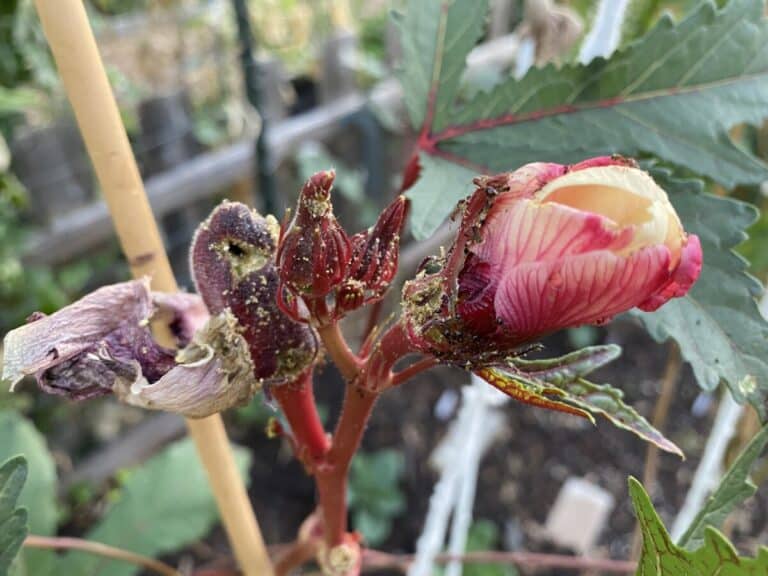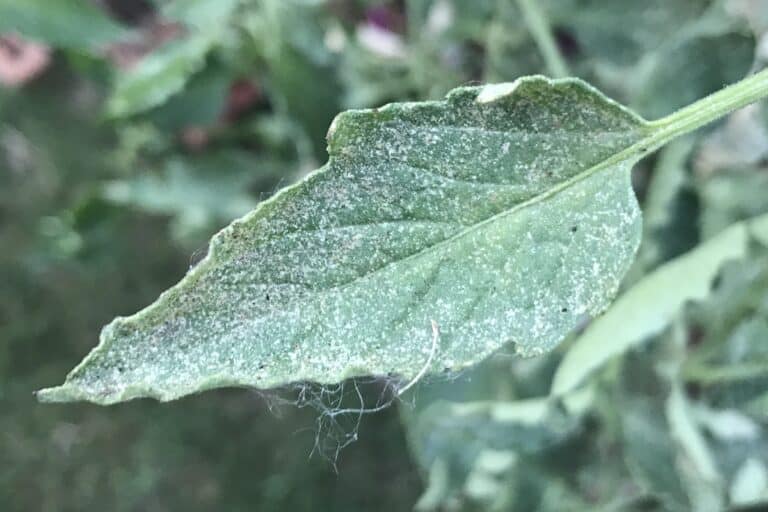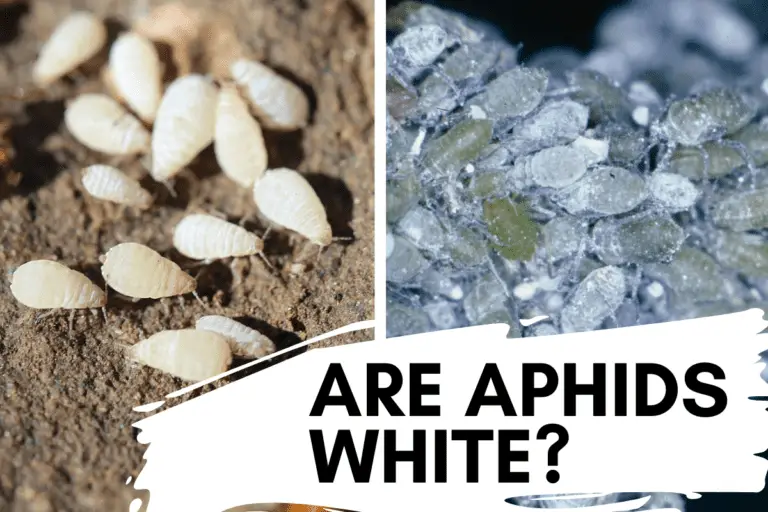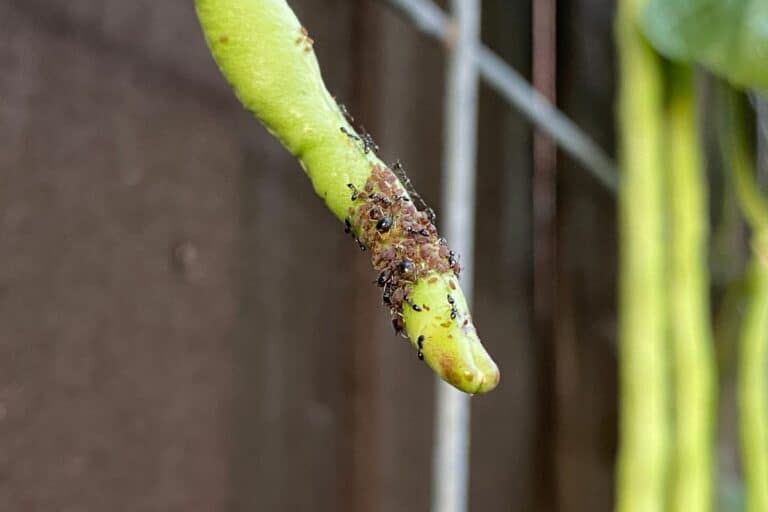Will Neem Oil Kill Pollinators or Beneficial Insects?
Neem oil is a widely-known natural insecticide that contains a chemical compound (azadirachtin) that’s been shown to kill, damage, or repel over 200 different insect pests.
But does neem oil kill or injure helpful pollinators? Does it hurt other beneficial insects?
Neem oil won’t hurt pollinators—unless it’s directly sprayed on them—since bees, wasps, and moths don’t eat plants and thus won’t ingest azadirachtin. Ladybugs aren’t affected much by neem oil, but azadirachtin has been shown to increase the mortality rates of predatory bugs like green lacewings.
I’ve seen various gardening bloggers claim, without proper evidence, that neem oil does nothing at all to beneficial insects. But as various studies have shown, this simply isn’t true.
What’s needed is a more nuanced conversation about neem oil’s environmental impacts.
The good news is this: Of all the chemical or natural insecticides you could use in your garden, neem oil is one of the very best for pests and pollinators alike. But this doesn’t mean that it has absolutely no negative impacts on beneficial insects.
So let’s take a closer look at what happens to beneficial bugs when you use neem oil in your garden.
Neem Oil and Pollinators: Will It Harm Them?
Pollinators are crucial to successful gardening, but what happens when you use neem oil on your plants? Can you kill or harm pollinators in the process?
Neem oil poses little to no threat to a wide variety of pollinators: bees, butterflies, flies, hoverflies, moths, and wasps. These insects don’t eat plant foliage, so they won’t be harmed by azadirachtin, the naturally occurring chemical compound that makes neem oil lethal to many destructive bugs.
But just to be clear: Neem oil can absolutely hurt pollinators if you spray them directly with a neem oil solution.
If they get hit with a direct spray, the neem oil will coat various parts of their exoskeleton. And if they get too covered in oil, they might not be able to breathe properly because insects do so through spiracles, which are tiny openings on their bodies that allow an inflow of oxygen.
If you’re not careful and you spray neem oil while pollinators are active in your garden, you might unintentionally harm or kill them. This is why, as I’ve noted in an article on the do’s and don’ts of neem oil, it’s best to spray as late in the day as possible since most pollinators are done with their daily work by that time.
Now let’s take a look at how neem oil impacts 2 of the most important beneficial pollinators: bees and butterflies.
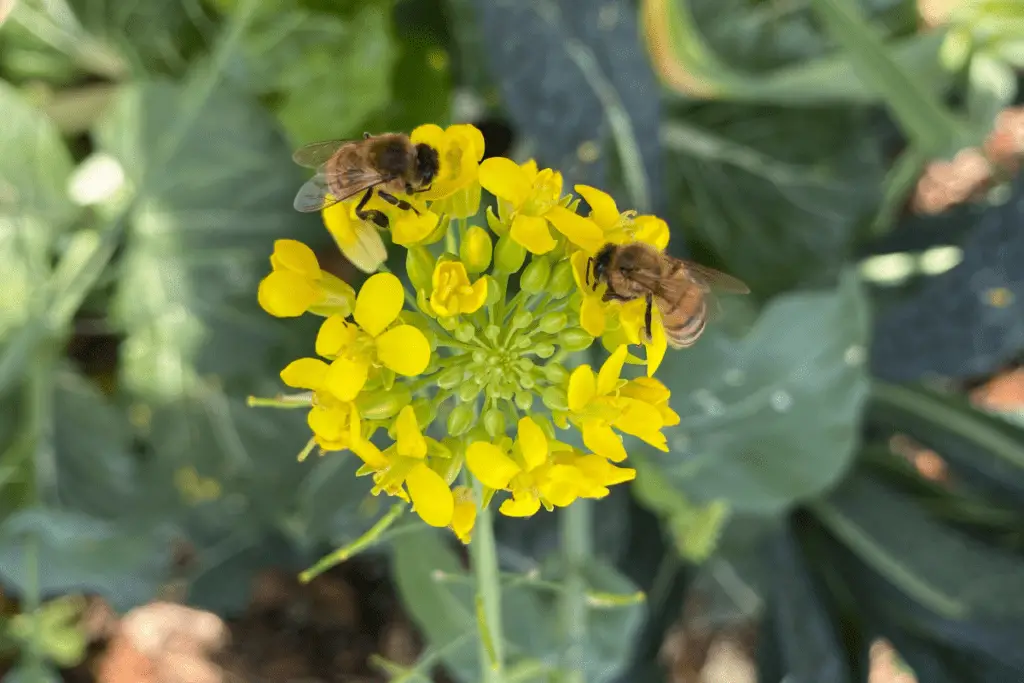
Bees
In one study, the researchers sprayed honeybees with various products to examine their toxicity and determined that neem oil, when sprayed directly onto bees, resulted in toxic effects. Several studies found that spraying neem oil on honeybee colonies could kill off honeybee mite parasites, but researchers noticed a higher mortality rate for queen bees. Other researchers fed honeybee larvae with neem-laced syrup and noticed that doing so resulted in honeybees that had a lower body mass and slower rates of movement.
But let’s just be clear: All of these are lab studies, not garden conditions. I don’t think any gardener is ever going to purposefully spray a honeybee colony with neem oil or nurture honeybee larvae in order to feed them neem-laced sugary substances.
Other studies seem to support this conclusion, suggesting that neem can be applied in quantities that’ll kill garden pests while doing little to no harm to honeybees.
Simply put, assuming you don’t spray bees directly, you likely won’t harm them because honeybees are focused on the nectar-producing glands located in and around the flower, and I have yet to see any research that suggests that bees can somehow ingest neem oil by seeking out flower nectar.
Butterflies
There’s very little research on neem oil in relation to butterflies, but several studies have shown that neem oil is an effective deterrent to cabbage white butterflies.
What happens is this: When the cabbage white butterfly is in its caterpillar form, it’s a major crop menace that chews its way across plants in the brassica family. Neem oil interrupts the caterpillar’s development and induces anti-feeding behavior so that the caterpillars don’t mature properly and often die prematurely.
However, I haven’t seen any research to suggest that neem oil will have a negative impact on beneficial butterflies akin to the damaging effects it has on cabbage white butterfly caterpillars, but I would urge caution nonetheless since the subject needs further study.
As I’ve noted in my article on ways to make neem oil sprays more effective, you should always spray your plants in the early evening. On the one hand, you’ll have less risk of spraying pollinators directly. On the other hand, the neem oil will have plenty of time to dry before the pollinators get going the following day.
Does Neem Oil Kill Predatory Bugs?
We’ve already looked at pollinators, but what about those bugs that prey on invasive pests? Does neem oil harm or kill predatory bugs?
Neem oil is generally safe for use around beneficial predator bugs such as ladybugs and parasitoid wasps, but research suggests that neem oil can have significant negative side effects on green lacewings, reducing hatchability while increasing mortality rates.
We’ve already explored the side effects of neem oil on beneficial pollinators, so let’s take a quick look at the effects that neem oil might have on 3 beneficial predators: ladybugs, green lacewings, and parasitoid wasps.
Ladybugs
Like so many others, I have a certain fondness for ladybugs. As a child, I thought they were adorable, but little did I know that they’re actually ferocious insect predators and thus one of those bugs that I’d love to attract to my backyard garden.
In one of the few studies I’ve seen that examined neem oil’s impact on ladybugs, researchers sprayed plants with different neem oil concentrations to determine whether different strengths had any impact on ladybugs’ rates of egg-laying, hatchability, or mortality.
Thankfully for those of us who love both ladybugs and neem oil, the study found that neem oil, at any of the tested concentrations, had little to no impact on ladybugs at any point in their life cycle. The researchers concluded that neem oil is thus a safer alternative than chemical pesticides when it comes to ladybugs.

Green Lacewings
Have you ever been in your garden and seen tiny white eggs dangling from wispy threads? If so, you might have green lacewings in your garden, which is a good thing since green lacewing larvae are beneficial bugs that prey on various garden pests.
Green lacewings are highly adaptable predators. They’ve skilled at locating invasive bugs, and they’re relatively easy to release in your garden if you’ve purchased some from online retailers.
Unfortunately, several studies have shown that neem oil can have negative effects on lacewings, so let’s take a quick look at what happens so you can weigh the risk of using neem oil on your plants.
One study found that neem oil can have residual side effects on green lacewings during their larval stage. When green lacewing larvae fed on bugs that had ingested neem oil, they experienced cellular damage. In other words, the green lacewings weren’t ingesting neem oil directly. They were impacted after eating bugs that had ingested neem oil.
As the researchers noted, this caused all kinds of weird things to start happening at the cellular level, but what the study didn’t explore was what kinds of effects these cellular changes had on rates of larval development, fertility, and morality. Simply put, it’s unclear from this study what kind of lasting effects neem oil has on green lacewings.
Another study found that neem oil had a significantly negative impact on green lacewings at each point in their life cycle.
Two weeks after exposure to neem oil, green lacewings’ egg-hatching rates dropped from 80% to 30%, larval mortality rates increased from 10% to 90%, and pupae emergence rates dropped from 90% to 40%.
More research needs to be done on this topic, but these findings suggest that you should be careful with neem oil if you’ve noticed any signs of lacewings in or around your garden.
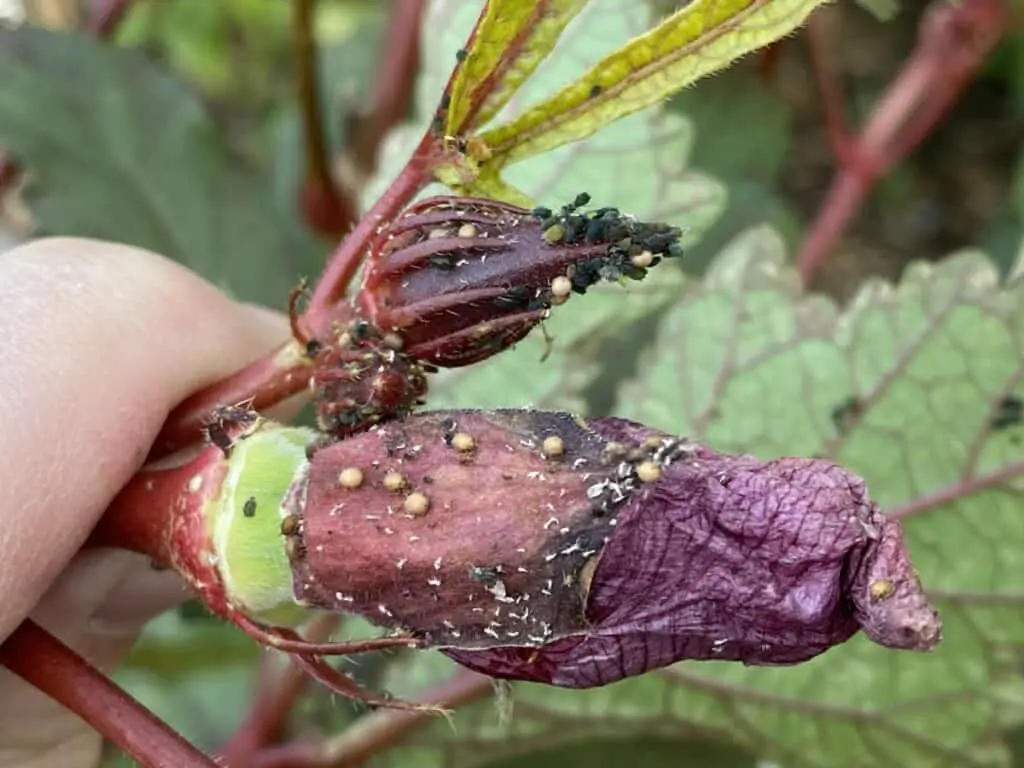
Parasitoid Wasps
Wasps aren’t as effective as bees when it comes to pollination, but they still play a role in the pollination process since they often visit flowers to seek out either nectar or nearby prey.
What differentiates parasitoid wasps from their non-parasitoid cousins is their ability to inject their eggs into the bodies of various garden pests, a subject I’ve covered in articles on invasive aphids and aphid infestations. When the larvae hatch, they eat their way out, thereby killing and “mummifying” the host bug.
There’s not much research when it comes to neem’s impacts on parasitoid wasps, but one study suggested that azadirachtin, in its purest form, had no discernible impact on parasitoid wasp mortality rates. However, the researchers found that the product Neemazal T/S, which contains azadirachtin along with other chemical compounds, caused 100% mortality in parasitoid wasps.
In other words, azadirachtin alone didn’t cause any problems, but an insecticide that combined azadirachtin with other chemical components had the opposite effect.
Another study looked at parasitoid wasps and aphids and concluded that neem has oil has no effect on adult parasitoid wasps. However, the researchers found that neem oil had a slightly negative impact on parasitoid wasp larvae in that it prevented some larvae from emerging out of their aphid mummies.
To learn how to identify whether or not you’ve got parasitoid wasps in your garden, check out my articles on the impact of aphids in your garden and how to spot and kill white aphids.
Given the study noted above, if you see parasitoid wasp mummies, you might want to delay spraying your plants with neem oil so that you don’t harm the parasitoid wasp larvae.
More research is needed to understand the impact of neem oil on parasitoid wasps, but generally speaking, neem oil is less likely than chemical insecticides to harm these beneficial bugs, although it might lead to reductions in the overall population if used too frequently around your garden.
Summary
The reason why neem oil works wonders against garden pests is due to the fact that these bugs attack plant’s foliage (not its flowers), either by chewing on plant matter or piercing it with their mouthparts so as to siphon off the plant’s nutrients.
When insects munch on plants, they ingest neem oil alongside plant material and thus unwittingly feed on azadirachtin in the process. Even when bugs merely pierce the plant’s epidermal layer to seek out its phloem cells–i.e. the cells that transport nutrients throughout the plant–they exchange fluids with the plant, and in doing so, they’ll ingest neem oil, which will allow the azadirachtin to begin its work.
As we saw above, neem oil can affect beneficial insects, but based on the research I’ve seen so far, I think the benefits of using neem oil outweigh their possible side effects on both pollinators and predatory bugs.
What Insects Does Neem Oil Kill?
Neem oil is an incredible natural insecticide precisely because it kills so many destructive pests.
Neem oil kills all kinds of soft-bodied insects, such as aphids, gnats, flies, mites, scales, thrips, and whiteflies. Neem oil will also kill some hard-bodied bugs—leaf-footed bugs, squash bugs, and stink bugs—but only when they’re in their nymph stage and thus more vulnerable to its effects.
See below for a list of common pests that neem oil will harm and kill. But please be warned: Neem oil has different levels of effectiveness against each of these bugs.
If you’d like to see how I’d rank neem oil in terms of its effectiveness against each of these pests, check out my article on the different bugs that neem oil will kill and get rid of.
Here’s a short list of insects that neem oil will kill. If you’ve had success using neem oil on other bugs, please get in touch, and I’ll add them to my list!
- Aphids
- Armyworms
- Bean Beetles
- Beetles
- Cabbage Worms
- Cockroaches
- Crickets
- Flea Beetles
- Fleas
- Flies
- Fruit Flies
- Gnats
- Grasshoppers
- Hornworms
- Leaf-Footed Bugs
- Leafhoppers
- Leafminers
- Lice
- Mealybugs
- Midges
- Mites
- Mosquitoes
- Moths
- Potato Beetles
- Psyllids
- Sawflies
- Scales
- Spider Mites
- Squash Bugs
- Stink Bugs
- Thrips
- Weevils
- Whiteflies
As I’ve noted in articles on how long neem oil will last and whether neem oil ever needs to be rinsed off or not, you’ll likely need to reapply neem oil each week to kill the bugs noted above, and you might have to do so for several weeks in a row to stop certain bug infestations (such as aphids and spider mites).
Is Neem Oil Safe for Humans?
You might be wondering if neem oil is a safe product to use in your garden, so I’ve got some good news for you:
Neem oil is one of the safest natural insecticides on the market, especially when compared to various chemical pesticides. When used according to the directions, it’ll provide protection against hundreds of bugs but break down quickly, leaving food safe to eat.
Of course, neem oil should never be swallowed, and you should take care not to spray neem oil on windy days to avoid getting it in your eyes or mouth.
But as I’ve noted in more detail in this article on whether neem oil is safe or not, it’s an incredibly safe product to use in your garden.
Additional Reading
I’m doing my best to share all I know about neem oil so as to help other gardeners battle annoying bug infestations.
If you’re interested in learning more about neem oil, I recommend reading these articles:

